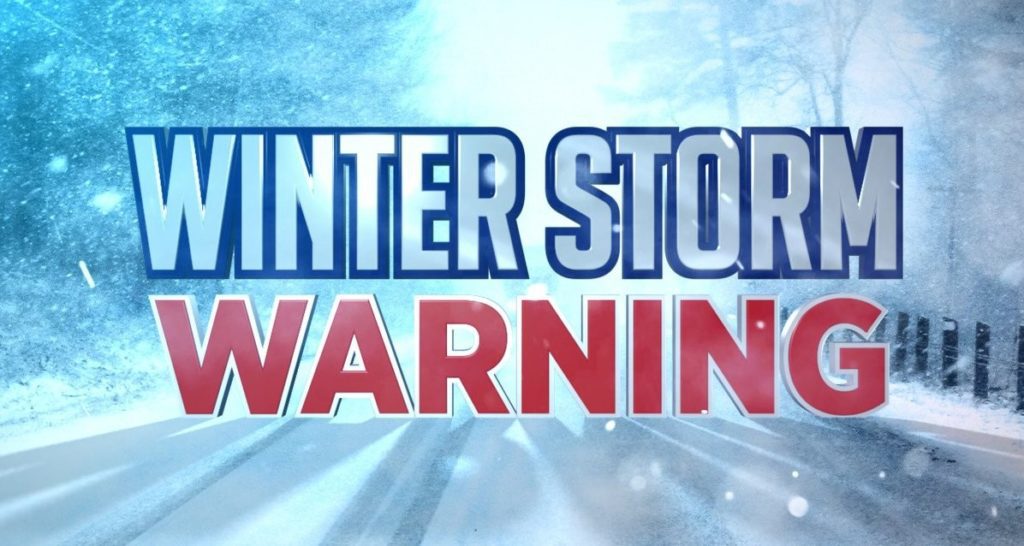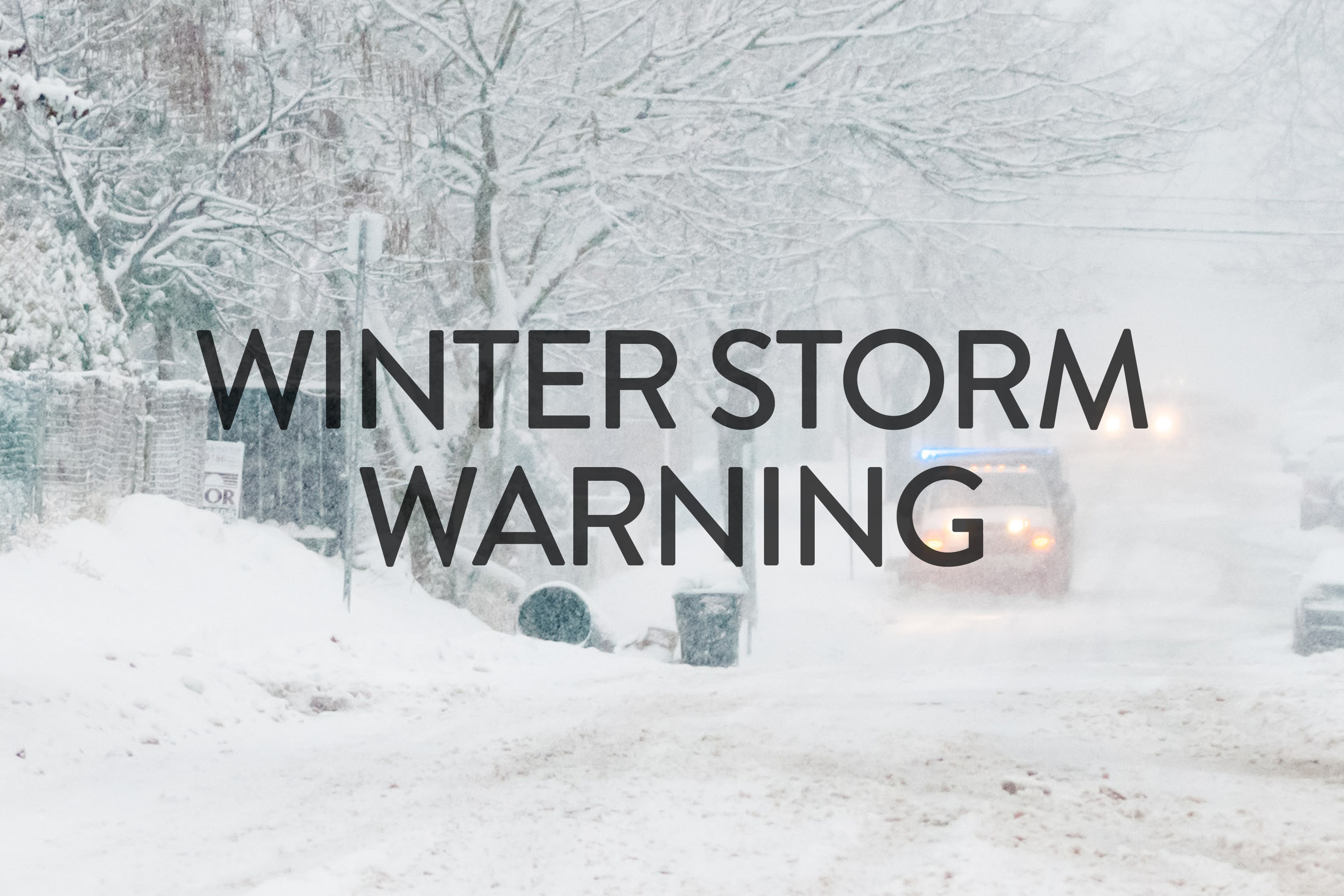Winter storm warnings are becoming more frequent, and it's time to take them seriously. Imagine waking up one morning to find your neighborhood blanketed in snow, power lines down, and roads completely blocked. It’s not just a scene from a movie—it’s reality for many people during harsh winters. Understanding what a winter storm warning means and how to prepare for it can make all the difference between staying safe and facing disaster.
Winter storms are no joke, and they can hit hard without warning—or rather, with an official warning that you might ignore at your own risk. These warnings are issued by meteorologists who monitor weather patterns closely to keep communities safe. But let’s face it, sometimes we get complacent, thinking “it won’t happen to me.” Well, newsflash: it can, and it does.
So, buckle up because we’re diving deep into everything you need to know about winter storm warnings. From understanding what triggers these alerts to practical tips on how to stay safe, this guide has got you covered. Let’s make sure you’re ready when Mother Nature decides to flex her icy muscles.
Read also:Farmer Wants A Wife 2025 The Ultimate Guide To Love Laughter And Country Living
What is a Winter Storm Warning?
A winter storm warning is basically the big red flag telling you to hunker down because bad weather is coming your way. Unlike a winter weather advisory, which indicates less severe conditions, a warning means serious business. Think heavy snowfall, freezing rain, strong winds, and possibly even blizzard conditions. When the National Weather Service (NWS) issues a warning, it’s their way of saying, “Hey, this isn’t just a little snow flurry; this could be dangerous.”
These warnings are based on specific criteria like expected snow accumulation, wind speed, and temperature drops. For example, if forecasters predict 6 inches or more of snow within a 12-hour period, that’s enough to trigger a warning. And let’s not forget about wind chill factors that can make temperatures feel much colder than they actually are. So yeah, it’s a big deal.
Why Should You Care About Winter Storm Warnings?
Okay, so why should you care? Because winter storms can disrupt daily life in ways you might not expect. Roads become treacherous, power outages are common, and essential services like emergency responders may struggle to reach those in need. Plus, exposure to extreme cold can lead to hypothermia or frostbite, which are no fun at all.
But here’s the thing: with proper preparation, you can minimize the risks. Knowing what to expect and having a plan in place can help you weather the storm safely. Whether you’re a seasoned pro at surviving winter or a newbie to snowy climates, paying attention to these warnings is crucial.
How Are Winter Storm Warnings Issued?
So, how exactly do these warnings come about? The process starts with meteorologists monitoring weather systems using advanced technology like radar, satellites, and computer models. They analyze data such as atmospheric pressure, wind patterns, and moisture levels to predict when and where a storm will strike.
Once the data suggests that a significant winter storm is likely, the NWS issues a warning through various channels. This includes local news stations, radio broadcasts, smartphone alerts, and social media platforms. The goal is to reach as many people as possible, so you really have no excuse for missing it.
Read also:Exploring The Intriguing Life Of Camilla Araujo Naked Ndash The Untold Story
Understanding the Criteria for Winter Storm Warnings
Now, let’s break down the specifics. For a winter storm warning to be issued, certain thresholds must be met. These vary depending on the region but generally include:
- 6 inches or more of snow within 12 hours
- Blowing snow reducing visibility to less than a quarter mile
- Sustained winds or gusts of 35 mph or higher
- Freezing rain or sleet causing hazardous conditions
Keep in mind that these criteria can differ slightly depending on where you live. For instance, a warning in a typically snowy area might require more snowfall compared to a region unaccustomed to winter weather.
Preparing for a Winter Storm Warning
Alright, now that you understand what a winter storm warning entails, let’s talk about how to prepare. Preparation is key, and the sooner you start, the better off you’ll be. Here are some steps to help you get ready:
Create an Emergency Kit
Every household should have an emergency kit stocked with essentials. Think non-perishable food, bottled water, flashlights, batteries, first aid supplies, and blankets. Don’t forget to include any medications or special items for pets or infants. You’ll want to ensure you can survive for at least 72 hours without outside assistance.
Winterize Your Home
Before the storm hits, take steps to winterize your home. Insulate pipes to prevent freezing, seal gaps around windows and doors, and make sure your heating system is in good working order. If you rely on a generator, ensure it’s functioning properly and that you have enough fuel.
Stay Informed
Keep tabs on the latest updates from reliable sources. Download weather apps, sign up for alerts, and tune in to local news channels. Knowledge is power, and staying informed can help you make smart decisions during a storm.
Driving in Winter Storm Conditions
If there’s one piece of advice to heed during a winter storm warning, it’s this: avoid driving unless absolutely necessary. Roads can become slippery and visibility poor, making travel extremely dangerous. But if you must drive, here’s what you need to know:
Check Your Vehicle
Make sure your car is ready for winter driving. Check tire tread, antifreeze levels, and windshield wipers. Consider investing in snow tires or chains if you live in a snowy area. And always carry an emergency kit in your vehicle, including blankets, food, and a shovel.
Drive Defensively
Slow down and increase your following distance to give yourself more time to react. Avoid sudden stops or turns, and use gentle acceleration to prevent skidding. If you start to slide, steer in the direction you want to go rather than overcorrecting.
Common Misconceptions About Winter Storm Warnings
There are a few myths floating around about winter storm warnings that need to be debunked. Let’s set the record straight:
Myth #1: It’s Just Snow, No Big Deal
Wrong. While snow might seem harmless, it can quickly turn into a life-threatening situation. Heavy snowfall can collapse roofs, down power lines, and block roads. Combine that with freezing rain and high winds, and you’ve got a recipe for disaster.
Myth #2: Warnings Are Always Accurate
While meteorologists use cutting-edge technology, predicting weather is not an exact science. Sometimes storms can be more or less severe than expected. That’s why it’s important to err on the side of caution and prepare for the worst.
Real-Life Examples of Winter Storm Warnings
To illustrate the importance of heeding winter storm warnings, let’s look at a few real-life examples:
Example #1: The Great Blizzard of 1888
This historic storm dumped up to 50 inches of snow on parts of the Northeastern United States, causing widespread destruction. Thousands of people were stranded, and over 400 lost their lives. Had modern warning systems been in place back then, the outcome might have been different.
Example #2: Winter Storm Uri (2021)
This recent storm caused massive power outages in Texas, leaving millions without heat during freezing temperatures. Many underestimated the severity of the storm, leading to tragic consequences. It serves as a reminder of the importance of taking warnings seriously.
Tips for Staying Safe During a Winter Storm
Here are some additional tips to keep you safe during a winter storm:
- Stay indoors as much as possible
- Dress in layers to stay warm
- Conserve heat by closing off unused rooms
- Check on neighbors, especially elderly or vulnerable individuals
- Avoid using candles for light due to fire risk
Conclusion
Winter storm warnings are a vital tool for keeping communities safe during severe weather events. By understanding what they mean and taking appropriate precautions, you can protect yourself and your loved ones. Remember, preparation is key, so don’t wait until the last minute to get ready.
We’d love to hear your thoughts! Have you ever experienced a winter storm warning? What steps did you take to stay safe? Leave a comment below and share this article with your friends and family to help spread awareness. Stay warm, stay safe, and let’s conquer winter together!
Table of Contents
- What is a Winter Storm Warning?
- Why Should You Care About Winter Storm Warnings?
- How Are Winter Storm Warnings Issued?
- Understanding the Criteria for Winter Storm Warnings
- Preparing for a Winter Storm Warning
- Create an Emergency Kit
- Winterize Your Home
- Stay Informed
- Driving in Winter Storm Conditions
- Check Your Vehicle
- Drive Defensively
- Common Misconceptions About Winter Storm Warnings
- Real-Life Examples of Winter Storm Warnings
- Tips for Staying Safe During a Winter Storm


